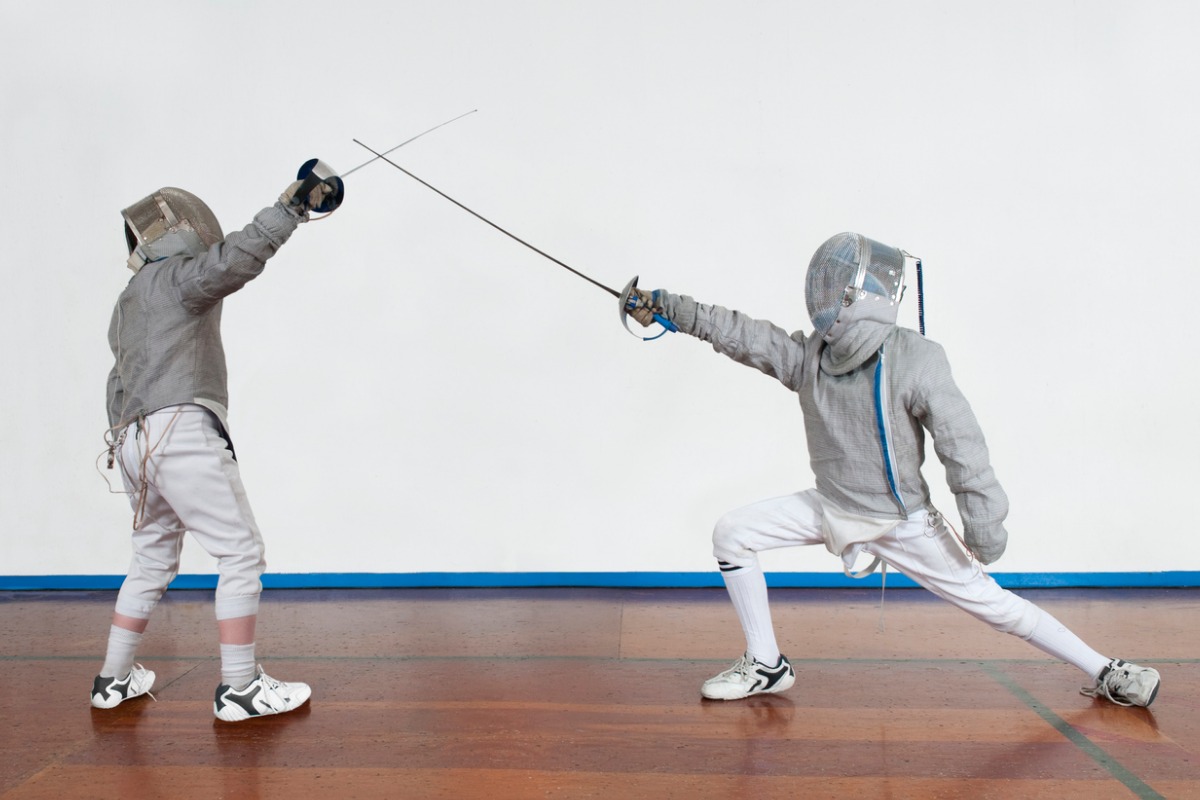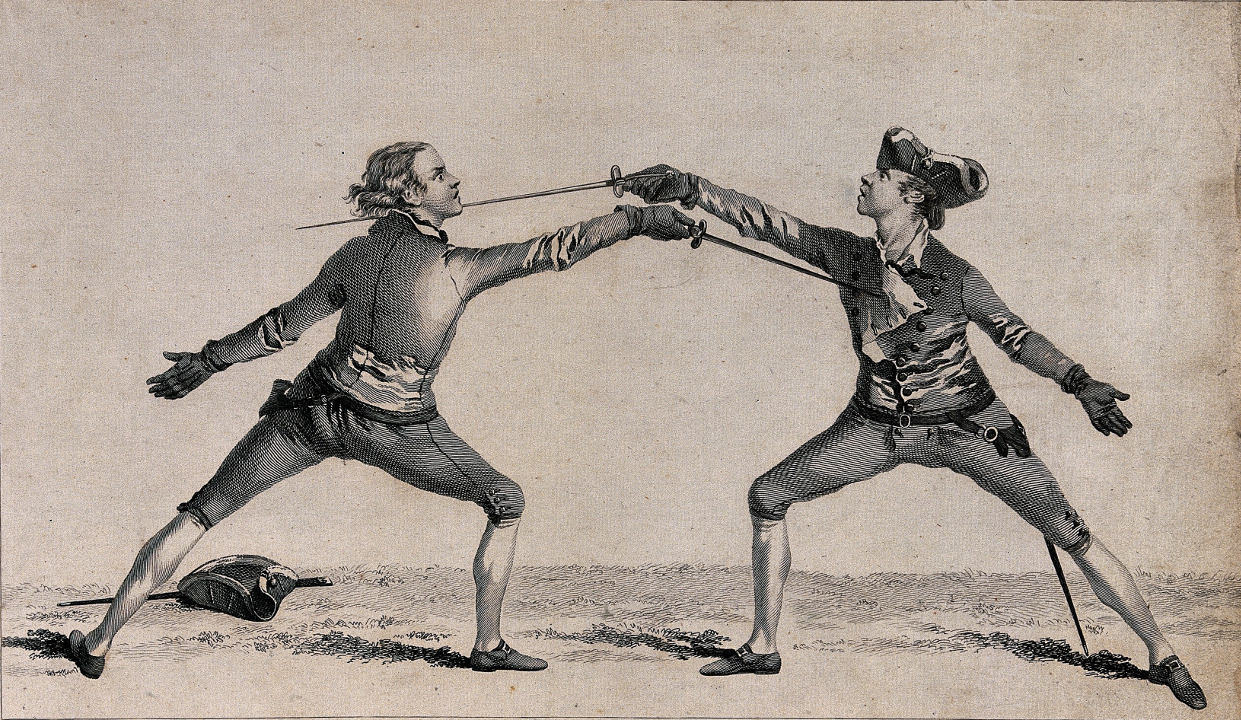
WHY SHOULD MY CHILD LEARN TO FENCE?
Fencing is a sport that develops mental skills as well as physical strength and those skills will transfer to your child’s academic success. You child will learn not only how to move effectively and athletically, but how to analyze, strategize, and respond quickly and effectively when plans go awry.
WHY SHOULD AN ADULT LEARN TO FENCE?
It’s more fun than doing crossword puzzles to keep your brain alert, helps you stay fit, and offers a great stress release. Television and movies have taken us from the bloody brawl of the Vikings to the courtly ways of the Three Musketeers and into the futuristic good versus evil drama of Star Wars. Movie makers reprised the traditional romantic elements with The Princess Bride and then gave Wonder Woman a sword to fight Nazis. You cannot experience these adventures in real life but you can learn to fence and that’s the next best thing. It’s the only sport where you begin a fight by saluting your opponent and end the bout by shaking their hand.
WHAT IS THE HISTORY OF FENCING?
Fencing goes back to the day two cavemen picked up sticks and attacked one another but the first historical evidence of swordplay is in Egypt and dates back to about 1190 BCE. The temple of Medinet Habú near Luxor Egypt, built by Ramses III shows swordsmen parrying with shields and wearing masks, bibs, and padding over their ears. The swords tips are covered so this is obviously a practice or a game rather than an actual battle.
The Romans made an art of sword combat with gladiators and beginners practiced with wooden swords. In the Middle Ages, the sword training was less uniform and began to separate into “schools of training” that reflected the ideas and preferences of individual fencing masters.


HOW DID THIS BECOME A SPORT?
What began as military training to increase the likelihood that their swordsmen would triumph in battle grew into a sport in its own right in the 15th to 16th century. This led to the development of the Fleuret (foil), which was a weapon with a flattened tip that had rules governing the “target area” (essentially, a vest), and the use of a wire-mesh mask.
Fencing was included in the first modern Olympic Games in 1896 in Athens, and has remained on the Olympic programme since then. The women’s fencing competition entered the Games in 1924 in Paris. Today, men and women compete in individual and team events, in which three types of weapon are used: foil, epee and sabre. The foil was, at first, the only weapon used by women, until the 1996 Games in Atlanta, when women’s epee was introduced. Women’s sabre appeared for the first time on the Olympic programme in Athens in 2004.
HOW DOES MODERN SPORTS FENCING WORK?
Today’s fencing follows Olympic rules. Indysabre is a member of the USA Fencing (United States Fencing Association) and anyone who competes at sanctioned tournaments is required to be a dues-paying member. This governing body insures competitions and training are conducted in a safe manner and manages the competition calendar. The USA Fencing also keeps a point system for determining who can represent the United States at world level competitions and Olympic Games.
There are three competitive weapons:
- Foil, epee, and sabre. Foil’s target area is essentially a vest and the lower part of the mask. It is a “right of way” weapon which means that if both fencers succeed at the same time, the referee determines who won that touch or rules it “simultaneous/no touch”.
- Epee is a weapon where touches are scored only with the tip but there is no “right of way” and the entire body is a target. If both fencers succeed at the same time, then both are awarded the point.
- Sabre is a weapon where the touches can be scored with the tip or any other part of the blade. It is a slashing weapon with the upper part of the body (including the head but not the hands) being viable target areas.
- These different types of weapons lead to different “styles” of fencing. Foil and epee tend to be slower with fencers taking more time to set up their attack. Sabre tends to be lightning fast.
WHAT WILL I NEED TO FENCE?
The club provides mask, sabres, and jackets for beginner students to “try before they buy”. You need to wear comfortable, loose-fitting clothing and sport shoes suitable for a wooden floor.
